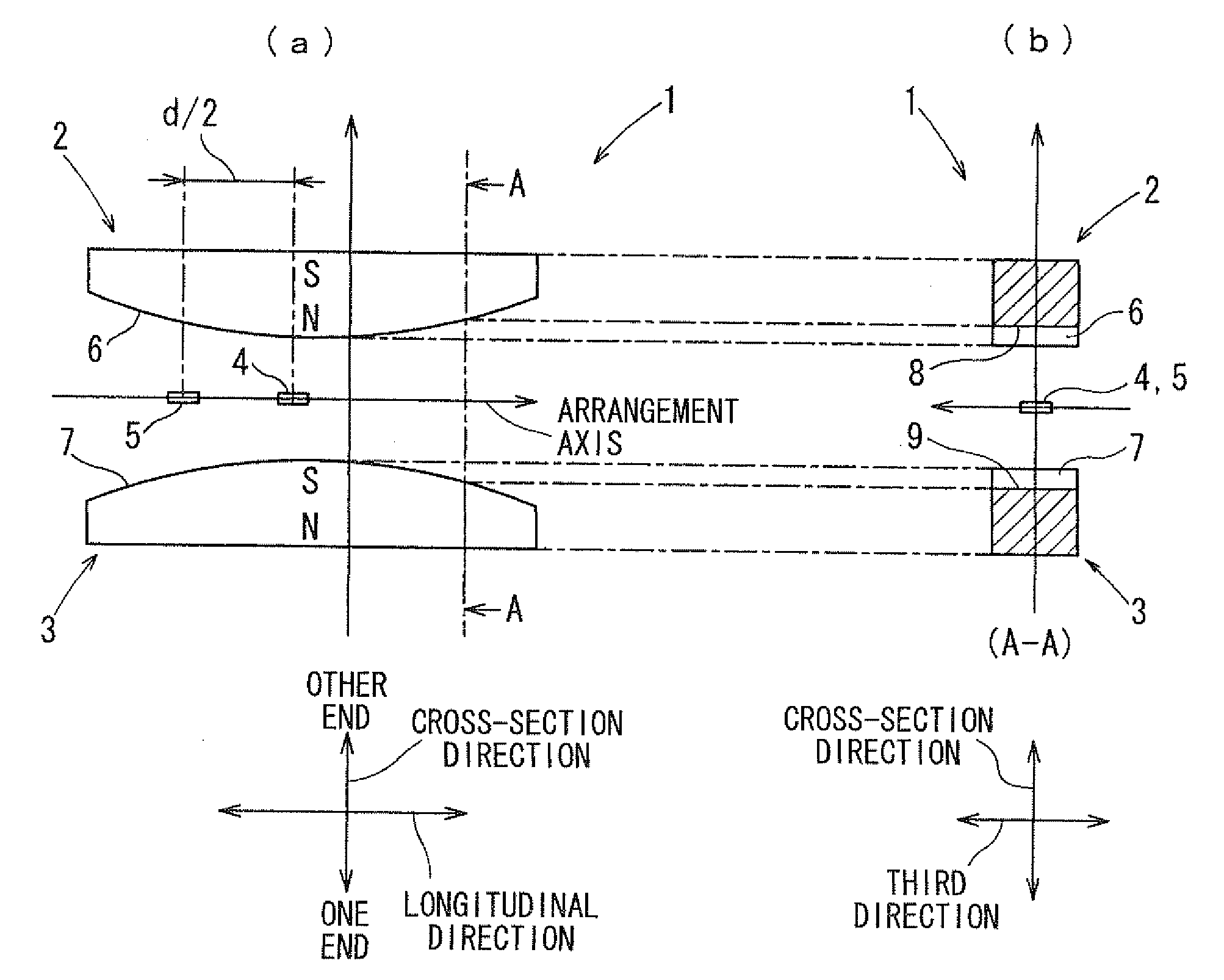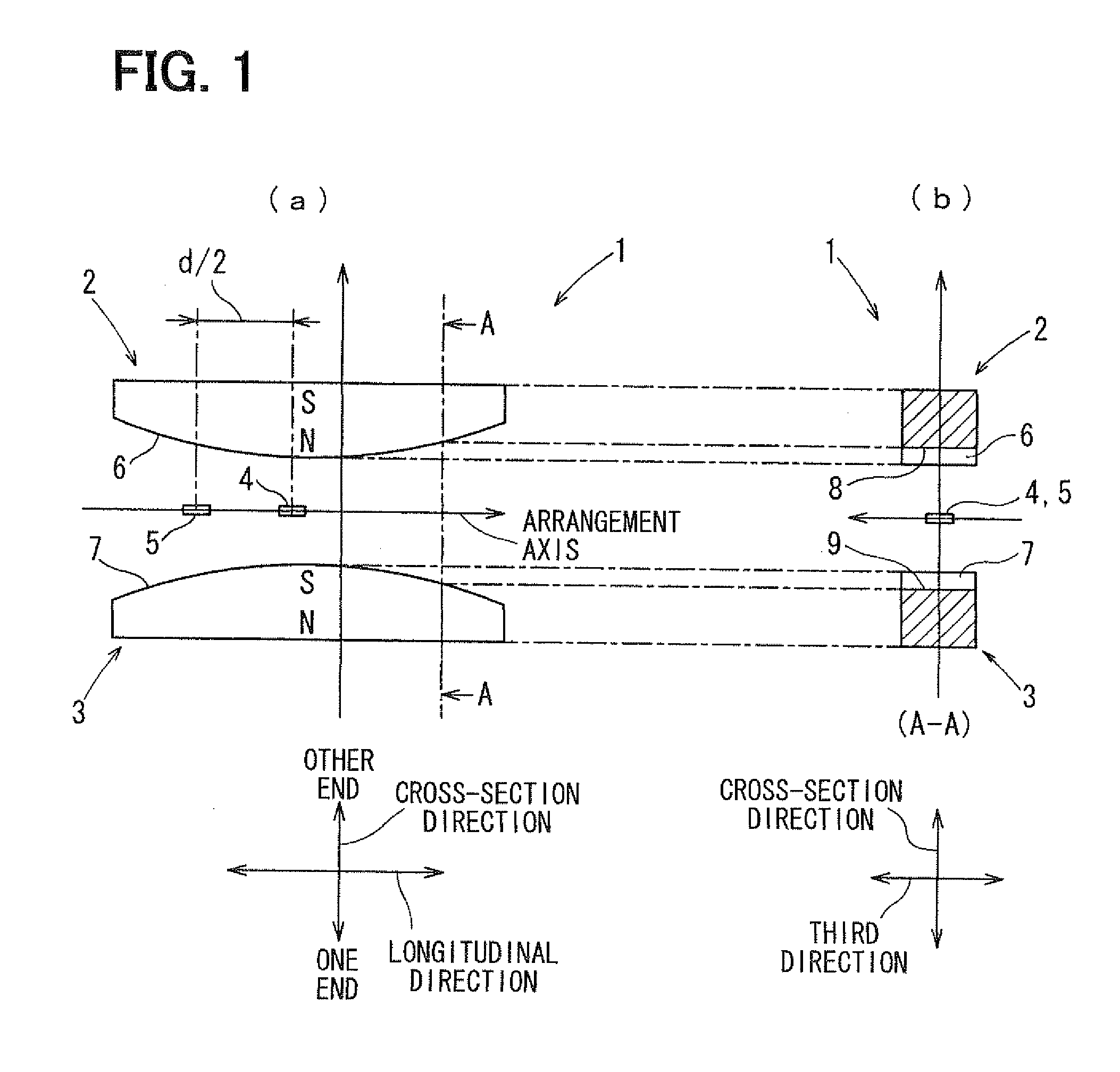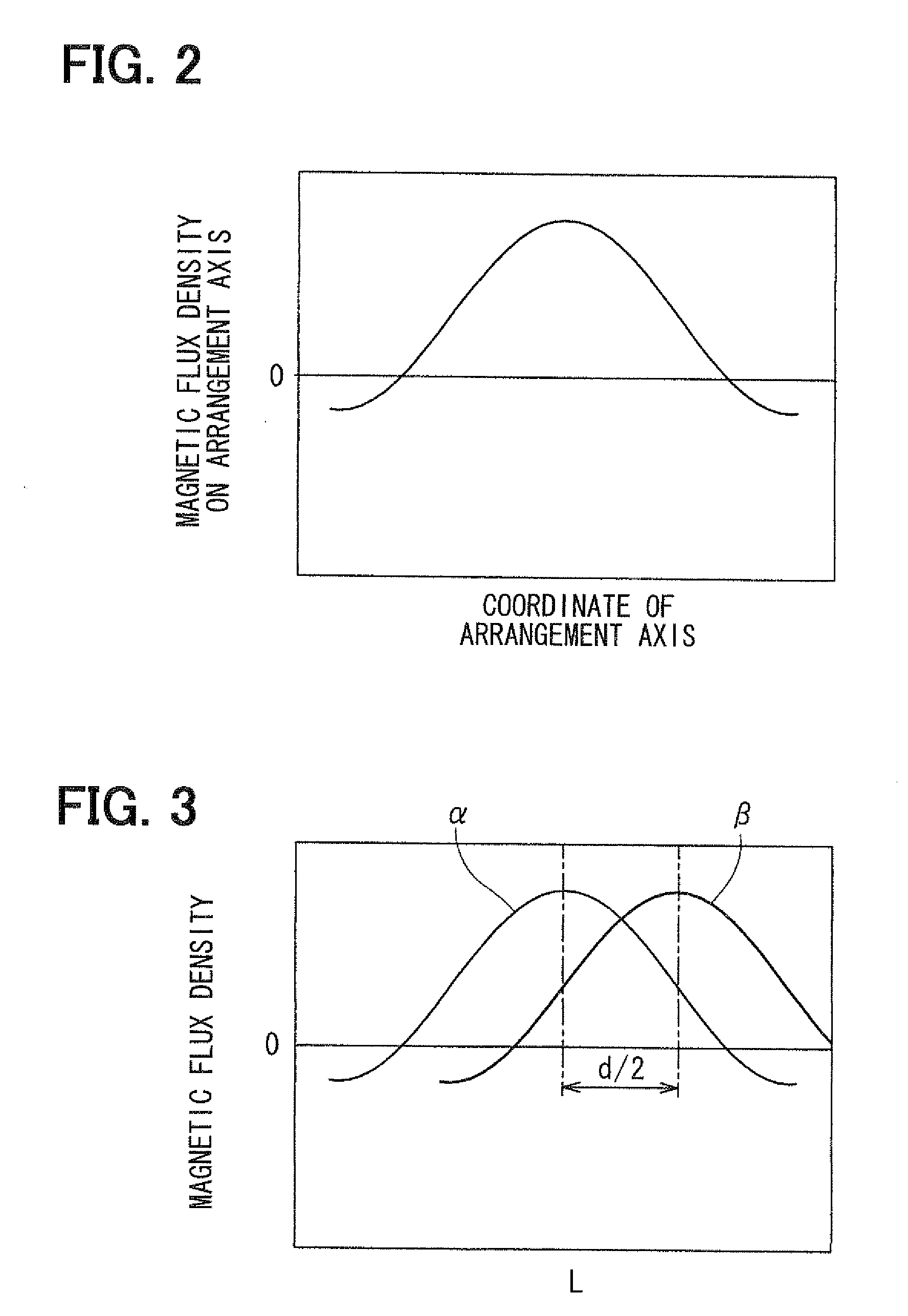Stroke sensor and rotation angle sensor
a technology of stroke sensor and rotation angle, which is applied in the direction of galvano-magnetic hall-effect devices, electrical control, instruments, etc., can solve the problem that the correlation between the stroke amount and the output value cannot become an ideal linear characteristic, the sensing accuracy cannot improve more than the limit, and the effect of accurate output value and accurate output valu
- Summary
- Abstract
- Description
- Claims
- Application Information
AI Technical Summary
Benefits of technology
Problems solved by technology
Method used
Image
Examples
first embodiment
[0116]A construction of a stroke sensor 1 according to a first embodiment of the present invention will be explained with reference to FIGS. 1 to 6. The stroke sensor 1 senses a linear displacement amount (stroke amount) of a sensed body (not shown) displaced linearly. As shown in FIG. 1, the stroke sensor 1 has two magnets 2, 3 as movable members, which form a magnetic flux and are displaced linearly in accordance with the displacement of the sensed body, and two magnetism sensitive sections 4, 5 as fixed members, which sense the magnetic flux and convert the magnetic flux into electric outputs for outputting the electric outputs. The stroke sensor 1 is a non-contact sensor capable of sensing the stroke amount of the sensed body without causing contact between the movable member and the fixed member.
[0117]For example, the stroke sensor 1 is mounted in a vehicle and calculates an output value based on the electric outputs outputted from the two magnetism sensitive sections 4, 5. The...
second embodiment
[0153]Next, a stroke sensor 1 according to a second embodiment of the present invention will be explained. The stroke sensor 1 according to the second embodiment has magnetism sensitive sections 4, 5, which are compatible Hall elements having the identical performance and the identical characteristics. As shown in FIGS. 9A and 9B, the magnetism sensitive sections 4, 5 are provided by a single chip 20 together with a DSP 14 having functions of a first offset adjusting device 17, a first inverse trigonometric function calculating device 18 and a gain adjusting device 19.
[0154]The chip 20 further has functions of operational amplifiers 21, 22 amplifying output signals from the Hall elements as the magnetism sensitive sections 4, 5, an A / D converter 23 performing digital processing of the amplified output signals, and a D / A converter 15. Thus, the physique of the stroke sensor 1 can be reduced and the performance and the characteristics of the magnetism sensitive sections 4, 5 can be eq...
third embodiment
[0155]Next, a stroke sensor 1 according to a third embodiment of the present invention will be explained. As shown in FIG. 10, the stroke sensor 1 according to the third embodiment has a magnetic body 28 that covers peripheries 26, 27 of the magnets 2, 3 on sides opposite from the swelling end edges 6, 7 with respect to the magnetization direction. Thus, robustness against a disturbance magnetic field can be improved.
PUM
 Login to View More
Login to View More Abstract
Description
Claims
Application Information
 Login to View More
Login to View More - R&D
- Intellectual Property
- Life Sciences
- Materials
- Tech Scout
- Unparalleled Data Quality
- Higher Quality Content
- 60% Fewer Hallucinations
Browse by: Latest US Patents, China's latest patents, Technical Efficacy Thesaurus, Application Domain, Technology Topic, Popular Technical Reports.
© 2025 PatSnap. All rights reserved.Legal|Privacy policy|Modern Slavery Act Transparency Statement|Sitemap|About US| Contact US: help@patsnap.com



